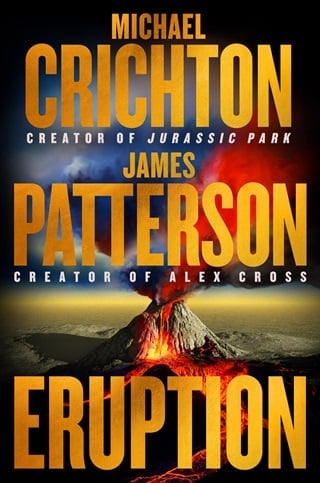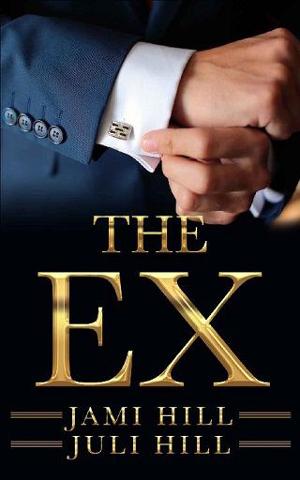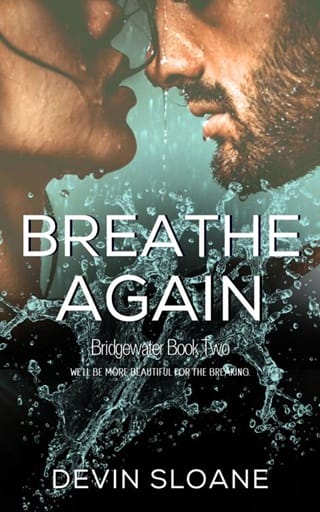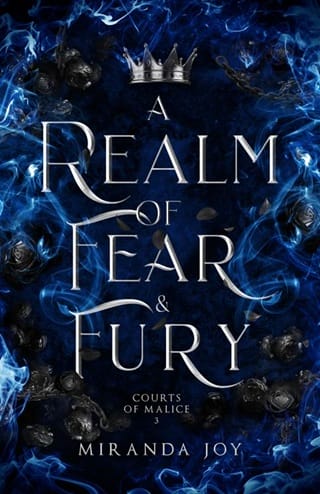Chapter 20
What kind of accident?" Mac asked.
"One of those canisters cracked about nine years ago. All hell broke loose for a week, but that was how we found out what this stuff really is."
"And what is it?" MacGregor said.
"It's herbicide."
"Radioactive herbicide?"
"Well, it wasn't originally radioactive. They did that later."
"Who did that?"
"The scientists at Fort Detrick, in Maryland." Briggs sighed. "Have you ever heard of Project Hades? Agent Black?"
Back in the 1940s, the army had tested chemicals for defoliant properties. By the 1950s, these programs had become much more sophisticated and the chemicals much more powerful. This was the research that led to dioxin, Agent Orange, Agent White, and the other defoliants used in Vietnam.
"The program was called Project Hades," Briggs said. "The work was carried out in a series of labs in Building A-14 at Detrick. In one lab, they found an unusually powerful chemical that killed a whole range of plants and trees very rapidly. Because the chemical turned the plants a smoky gray-black color, it was called Agent Black and earmarked for field testing."
At Detrick A-14, all the labs had houseplants. Lots of them. They were the equivalent of canaries in coal mines. Although the testing of Agent Black had been done in closed containers, houseplants around the lab began to die.
"Gee, I wonder why," Mac said.
"The head of the lab was a guy named Handler," Briggs said, "and he kept these rare orchids in his office, which was across the hall from the main lab. The orchids died too."
At first everybody assumed it was due to contamination—that somehow the herbicide had been carried by the lab workers to other plants. But when they tested the dead plants, they found no trace of herbicide. Why they had died was a mystery.
Then, in other labs, more plants turned black and died. Again no trace of the herbicide.
"All this happened in the course of a week," Briggs continued. "No one in that building knew what the hell was happening. They didn't even know whether it was safe to go home to their families at night, since plants all around them were dying for no apparent reason. They did know that the stuff was dangerous as hell, but they were afraid to burn it, because at that time there was no closed incinerator capable of handling large quantities of hazardous material. They knew they couldn't bury it. And they couldn't leave it sitting there. So they decided to mix the bomb contents with radioisotopes."
Briggs explained this approach had several advantages. First, the Detrick scientists had begun to suspect that Agent Black wasn't just a chemical herbicide, that it contained some kind of living material, probably bacteria, and if that was so, the radiation would kill it. In addition, radioactivity would mark the material as dangerous. And finally, if any of it escaped into the environment, they could trace it through the radioactivity.
By 1989, it became possible to bring a portable incinerator to the Big Island and burn the canisters—or it would have been possible if they hadn't been radioactive. To be burned, they would have to go back to Hanford, but that same year Hanford was decommissioned.
It was already clear that the glass canisters were starting to degrade because of the decay heat produced by the radioactive material. Since there was still no funding to remove the canisters, the army decided, as a temporary measure, to place them in cooling pools of water; this was standard procedure for high-level radioactive materials. It hadn't been done in the Ice Tube because nobody had expected the material to remain there so long.
A contract to construct five concrete-lined pools was put out for public bidding, as required by law. The project was referred to vaguely as a "hazardous waste facility." The French Greenpeace organization in Tahiti got word of it and sued to block construction. There were pamphlets and headlines about the "U.S. Toxic Paradise." So Hawai‘i pulled the plug, and the contract was withdrawn. Greenpeace declared victory and went away.
But the canisters continued to decay.
Then, in 2016, there was the accident.
The increasing brittleness of the glass worried everyone, so the army decided to cap each end of the canisters with impact-cushioning foam blocks and place the blocks on a multi-padded floor. The idea was that the foam and flooring would absorb minor shocks. This was admittedly an inadequate solution, but there was no funding for anything more substantial. Explosive ordnance disposal teams, skilled at handling hazardous materials, were deployed to mount the canisters in the foam blocks. The work was carried out over twelve weeks.
While one canister was being set in blocks, it began to leak. Only a small amount of material escaped before the cylinder was encased in sealant and repackaged for permanent removal. However, one of the EOD workers involved in this incident apparently performed inadequate washdown, failing to thoroughly clean the soles of his boots as he left the cave. A small quantity of the material was tracked into the locker room and picked up on the bottom of the worker's own shoes. A few days later, this worker visited the Hilo Botanical Gardens wearing those shoes, and he tracked the material into a grove of banyan trees.
"What happened to him?"
Briggs's face didn't change expression. "He died," he said. "Like the banyan trees."
"How was that explained?"
"It wasn't. The guy had no family. Lived alone. It was like he was never here."
He described the scene from the botanical gardens; Mac vaguely remembered hearing about it when he came to HVO. Something about an herbicide spill. Little did he know.
"Long story short," Briggs said, "we sent a team and cleaned the spill up with these modern fire extinguishers called Cold Fire."
"And that was the end?"
"Yes. We stopped it. But Detrick took back samples of dead grass and tree bark. And they finally figured out what the mechanism of action was."
"You just going to leave me hanging, Colonel?"
Briggs glanced at his watch. "I believe we've arranged a demonstration for you in about ten minutes."
 Fullepub
Fullepub 



